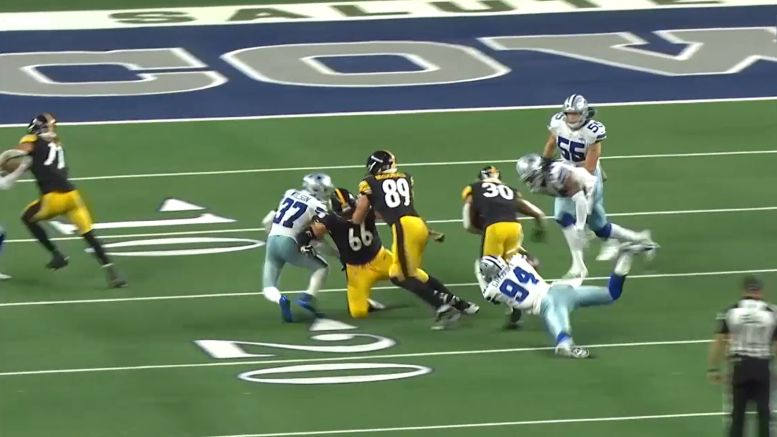For the past three seasons, the Pittsburgh Steelers haven’t been able to muster up a 1000 yard rusher. James Conner was close to hitting that mark in 2018 but he twisted an ankle against the Chargers, missed a couple games, and hey, math is math. He finished the year with 973 yards.
For a franchise built by the run game, three straight seasons without someone cracking four digits, 2018 to 2020, is uncommon. And if they go another year and make it four in a row, they’ll really be in rare territory. Since 1970, here are the Steelers’ longest 1000 yard droughts.
| Year | Drought |
|---|---|
| 1984-1991 | 8 Seasons |
| 2018-2020 | 3 Seasons |
| 2011-2013 | 3 Seasons |
| 2002-2004 | 3 Seasons |
| 1993-1995 | 3 Seasons |
| 1980-1982 | 3 Seasons |
In the Kevin Colbert era, this is only the third such streak. And since the merger, only the sixth. If Pittsburgh can’t produce a 1000 yard rusher in 2021, it’ll be the second-longest streak of the last 50 years, only topped by the ghastly eight year streak from 1984 to 1991, when Barry Foster mercifully ended things in 1992.
To the present day, Pittsburgh’s last 1000 yard rusher was Le’Veon Bell in 2017, his final year actively playing for the team, amassing 1291 yards on the ground. He held out the next season, pressing Conner into action, who played well. But his late-season ankle injury prevented him from hitting the 1000 yard threshold. The run game has had the bottom fall out of it the past two seasons thanks to more injuries, worse o-line play, and Ben Roethlisberger’s 2019 injury.
In 2019, Conner was again their “leading” rusher with 464 yards the fewest of any top Steelers’ rusher since Don Shy’s 341 yards in 1967. And this past year, Conner was again their leader with 721 yards. Combined, Pittsburgh’s running backs totaled just over 1200 yards, a pitiful number, and their run success rate was among the lowest in the game.
None of this is to say the Steelers are required to have a 1000 yard rusher next season. Doing that doesn’t ensure a Super Bowl run. But a focus on this speaks to the offseason philosophy of improving the run game, being able to run more effectively and situationally, and the likelihood they both move on from Conner and draft his replacement early in April’s draft.







